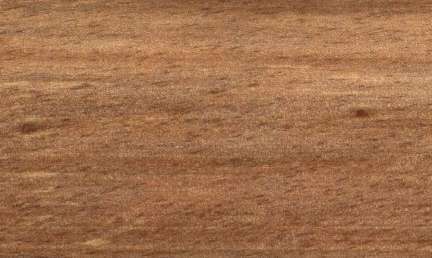
Sajo (Campnosperma panamensis)
Family: Anacardiaceae
Common names: Hoary, Orey, Orey wood, Sajo
Distributed in: Brazil, Colombia, Columbia, Costa Rica, Ecuador, Nicaragua, Panama, Peru (Central America, Latin America)
Distribution overview: Reported in the Atlantic lowlands of northern Panama, adjacent Costa Rica, and Pacific coastal regions of Colombia; forms almost pure stands in these marshy areas.
Common uses: Baskets, Bent Parts, Boxes and crates, Building materials, Cabinetmaking, Chairs, Chests, Decorative plywood, Desks, Dining-room furniture, Drawer sides, Fiberboard, Fine furniture, Food containers, Furniture , Furniture components, Furniture squares or stock, Furniture, Hatracks, Interior construction, Interior trim, Kitchen cabinets, Light construction, Living-room suites, Millwork, Moldings, Office furniture, Particleboard, Pencil, Plywood, Pulp/Paper products, Pulpwood, Radio - stereo - TV cabinets, Rustic furniture, Stools, Structural plywood, Utility furniture, Utility plywood, Wardrobes
Environment profile: Vulnerable in parts of its natural habitat
Tree size: Trunk diameter is 150-200 cm
Colors: the heart isYellow to golden-yellow to orange, Yellowish tanand the sapwoodWhite, Yellow.The grain isStraight, the textureMediumand the lusterSlightly lustrous
Natural durability: Susceptible to insect attack, Very durable
Odor: Seasoned wood has no characteristic odor or taste
Kiln Schedules: UK=G US=T8B3/T5B1
Kiln Drying Rate: Very slow
Drying Defects: Resin Exudation, Splitting
Ease of Drying: Variable
Tree Identification: Bole/stem form is straight
Comments: General finishing qualities are rated as good
Blunting Effect: Slight effect
Boring: Fairly easy to very easy
Carving: Fair to Good Results
Cutting Resistance: Low resistance
Gluing: Fairly Easy to Very Easy
Mortising: Moderately easy to mortise
Moulding: Moulding ease is moderate
Movement in Service: Moulding ease is moderate
Nailing: Pre-Boring Recommended, Very Good to Excellent
Planing: Very Good to Excellent
Resistance to Impregnation: Wood is easily treated
Response to hand tools: Responds Readily
Routing recessing: Routs well with average machine tools
Sanding: Very Good to Excellent Results
Veneering qualities: Veneers easily, Veneers moderately easy
Steam bending: Unsuitable
Screwing: Good screw holding properties, Pre-boring recommended; Turning: Very Good to Excellent Results
Painting: Very Good to Excellent; Polishing: Very Good to Excellent; Staining: Very Good to Excellent; Varnishing: Very Good to Excellent;
- Numerical data Metric
- Numerical data English
- Strength properties
- References
 |
 |
 |
 |
| Item |
Green |
Dry |
Metric |
| Specific Gravity |
0,29 |
|
|
| Density |
|
384 |
kg/m3 |
| Bending Strength |
379 |
619 |
kg/cm2 |
| Crushing Strength |
191 |
352 |
kg/cm2 |
| Hardness |
|
170 |
kg |
| Impact Strength |
|
|
cm |
| Shearing Strength |
|
|
kg/cm2 |
| Stiffness |
80 |
101 |
1000 kg/cm2 |
| Tangential Shrinkage |
|
|
% |
| Radial Shrinkage |
|
|
% |
| Weight |
|
|
kg/m3 |
| Maximum Load |
|
|
cm-kg/cm3 |
| Toughness |
|
|
cm-kg |
| Static Bending |
|
|
kg/cm2 |
|
 |  |  |  | | Item | Green | Dry | English | | Bending Strength | 5395 | 8807 | psi | | Density | | 24 | lbs/ft3 | | Hardness | | 375 | lbs | | Maximum Crushing Strength | 2723 | 5020 | psi | | Stiffness | 1141 | 1445 | 1000 psi | | Specific Gravity | 0.29 | | | | Weight | 25 | 20 | lbs/ft3 | |
Bending strength (MOR) = low
Max. crushing strength = low
Modulus of Elasticity (stiffness) = very low
Modulus of Elasticity (stiffness) = low
Density (dry weight) = 23-30 lbs/cu. ft.
Max. crushing strength = medium
Weight = moderate
Surfaces may dent or scratch easily
Surfaces may dent easily
Hardness (side grain) = very soft
Density (dry weight) = 15-22 lbs/cu. ft.
Compression strength (parallel to grain) = low
Bending strength (MOR) = very low
Bending strength (MOR) = medium
Bending strength of the species is considered medium, being much weaker than White oak or Teak in the air-dry condition (about 12 percent moisture content). Maximum crushing strength, or compression strength parallel to grain, is low. It is weaker than Mahogany or Teak. The wood is soft, and surfaces may dent easily. It also does not wear well, and mars easily. The weight is moderate. The species has average, or medium, density.
Bendtsen, B.A., Chudnoff, M.,1981,Properties of Seven Colombian Woods,U.S.A. Department of Agriculture, Forest Service, Forest Products,Laboratory, Madison Research Note FPL0242Brown, W.H.,1978,Timbers of the World, No. 2 South America,TRADA, Red Booklet SeriesChudnoff, M.,1984,Tropical Timbers of the World,U.S.A. Department of Agriculture, Forest Service, Forest Products,Laboratory, Madison.Erfurth, T., Rusche, H.,1976,The Marketing of Tropical Wood B. Wood Species from S. American Tropical,Moist Forests,F.A.O. Forestry DepartmentTakahashi, A.,1975,Compilation of data on the Mechanical Properties of Foreign Woods (Part 2,Central and South America,Shimane University, Japan, Research Report on Foreign Wood No.4WCMC. 1992. Conservation Status Listing - Trees and Timbers of the World. World Conservation Monitoring Center-Plants Programme, Cambridge, CB3 ODL, United Kingdom.
|








